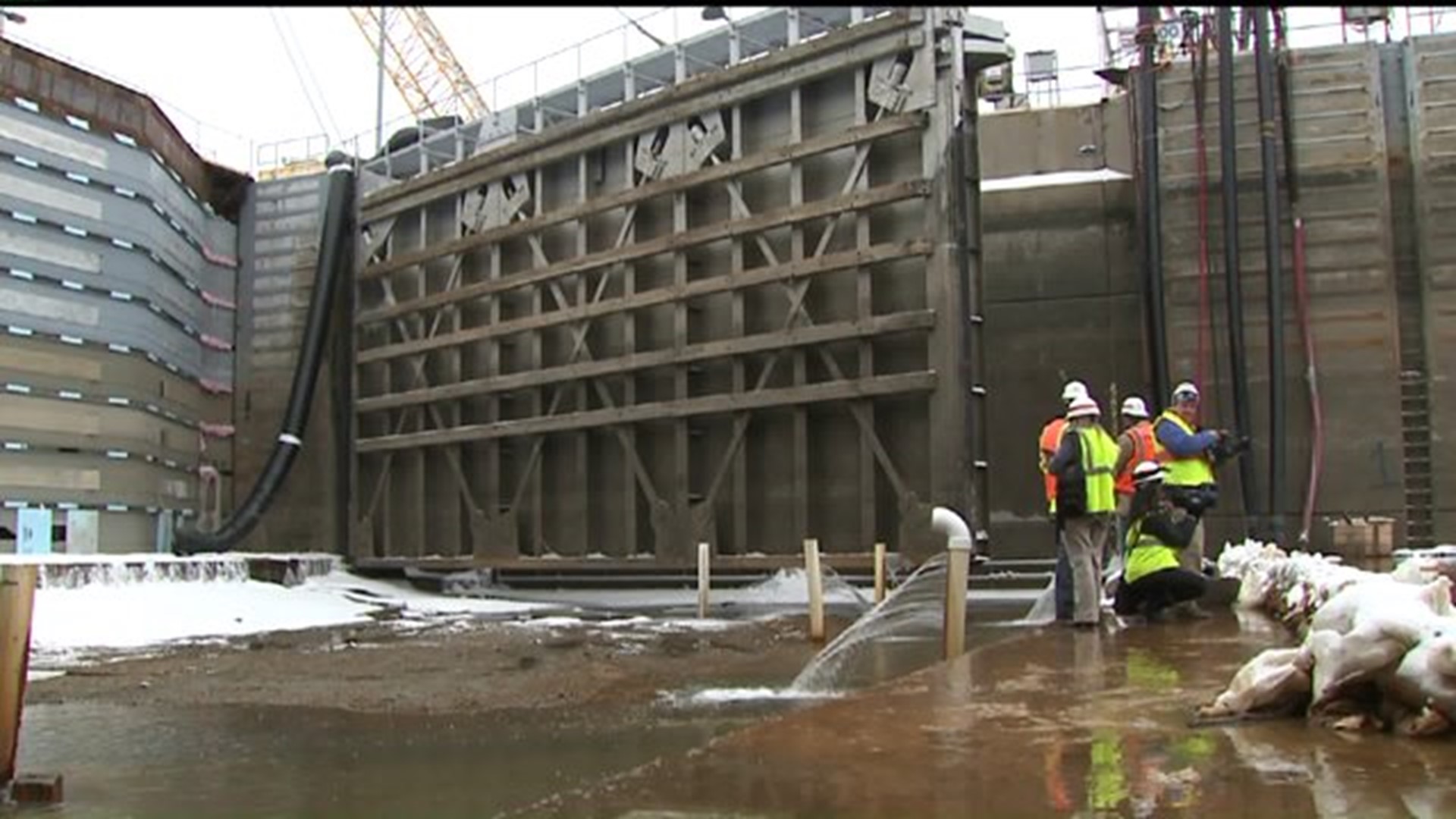A multi-million dollar project on the Mississippi River is allowing a rare look inside the workings of a lock and dam, and the floor of the river itself.
More than 10 million gallons of the river has been pumped out of Lock and Dam 13 in Fulton this week, emptying the chamber so the Army Corps of Engineers can inspect the aging infrastructure.
"It's 20 Olympic-sized pools worth of water, to give you perspective," said Aaron Dunlop, with the Corps.
It's called dewatering, a process conducted about every 20 years.
"Basically, dewatering is like taking water out of a bathtub. We just want to remove the water so we can see our structure, so we can inspect our gates, valves, concrete, anything and everything," said Matt Thurman, with the Corps.
"A lot of this stuff is underwater 365, we never get a chance to see it", he said. "You don't know what you're gonna get til you get the water out, like Forrest Gump and a box of chocolates," Thurman said.
So far, repairs have included caulking cracks in the chamber's wall. A massive faulty valve was lifted out of the chamber by a giant crane. The valve weighs 26,000 pounds.
"It was an unexpected repair, but that's the sort of stuff our teams are expert at doing," said Dunlop.
The draining of the chamber allowed visiting media on a tour Tuesday, February 16, 2016, to actually stand on the floor of the Mississippi River.
Holding the river back, are two temporary bulkheads, one at each end of the chamber. The bulkheads are like Lincoln Logs on steroids, sections that each weigh 49 tons apiece that are stacked to create the temporary walls.
A permanent concrete beam was built underneath the bulkheads, to help make future dewaterings more efficient.
The lock and dam system up and down the river is about 80 years old, and their original life expectancy was 50. That was boosted with some enhancements to 75 years old, but the fact is, the aging infrastructure needs attention and funds in the budget.
Until then, the Corps is doing the proper maintenance on a priority basis.
"At this point, there's no easy solution to replace these structures. We just continue to perform and try and keep them operational. It could be millions of dollars of economic impact for a single day closure during navigation season. That's why it's critical we do this. Our goal is to ensure we have 100 percent up-time for the navigation industry. That's our customer," said Dunlop.
Repairs of valves and cables and other working parts are expected to be completed the first week in March, when the river will then be pumped back into Lock and Dam 13.

